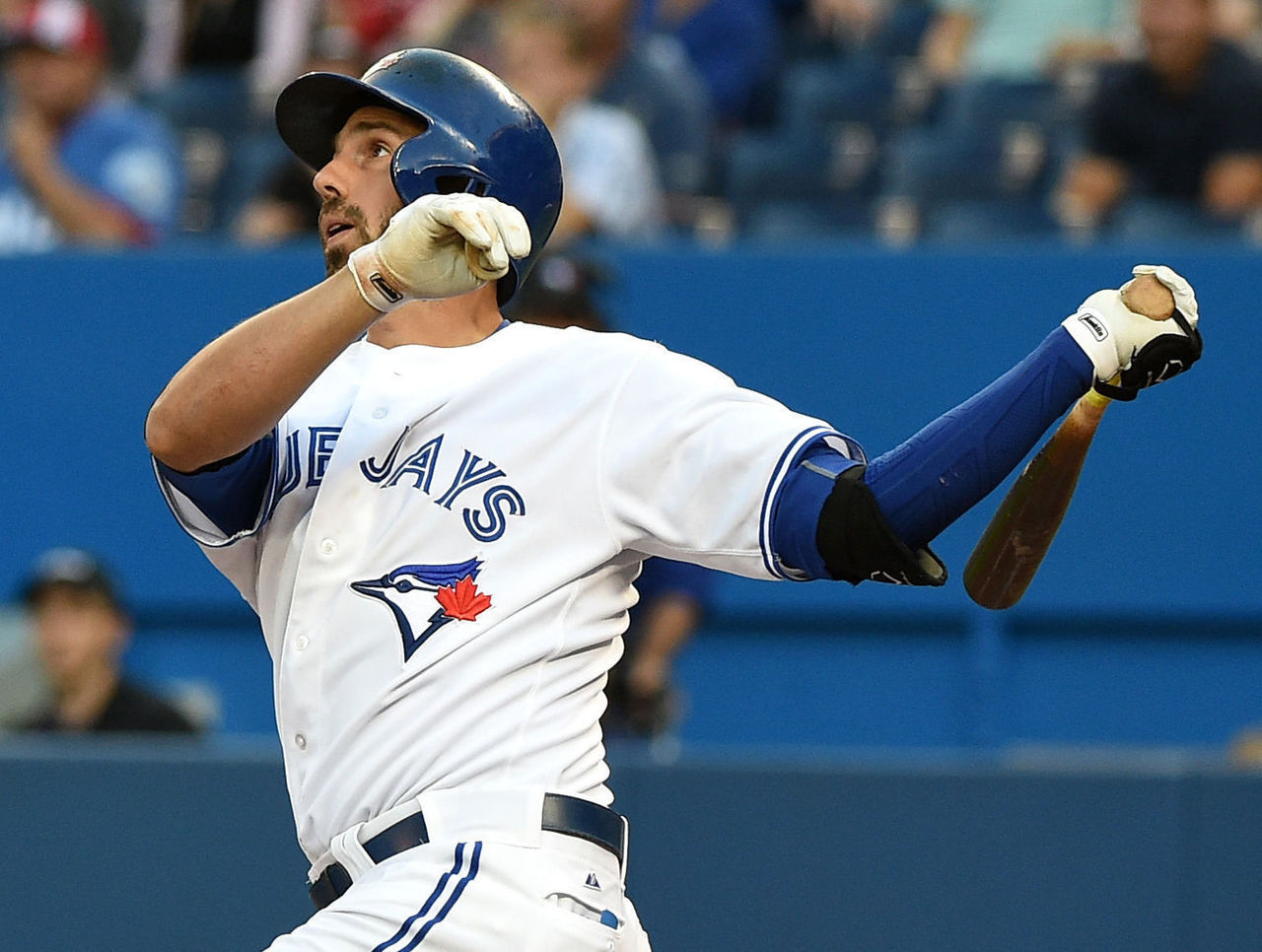3 unheralded factors behind the Blue Jays' magical season
Shortly before midnight on July 27, barely 24 hours after the Blue Jays fell to 50-50 with a 6-5 loss in Seattle, general manager Alex Anthopoulos brokered a deal to bring shortstop Troy Tulowitzki to Toronto in exchange for Jose Reyes and a pair of pitching prospects. That was his warm-up act.
Over the following four days, Anthopoulos orchestrated a maelstrom of huge trades. A deal with the Tigers sent David Price northeast up the 401 from Detroit. Ben Revere came over from Philadelphia. Anthopoulos grabbed Mark Lowe from the Mariners, too.
By the time the paperwork was filed, the 38-year-old had rendered his roster - the one that dropped that heartbreaking series finale in Seattle days before - virtually unrecognizable.
There were, however, some other factors that helped Toronto grab its first division title in more than two decades. Here are three unheralded reasons that explain the Blue Jays' dominance:
GOINS UP AS A BLUE JAY

Due to persistent injury problems in Toronto's middle infield, Ryan Goins and his .531 career OPS ended up playing more games for the Blue Jays in 2015 than all but six players, emerging as a principal character in the club's late-summer swoon amid an offensive breakout from the light-hitting 27-year-old. Filling in for the consistently injured Devon Travis, Goins - who also spent four weeks at shortstop after Tulowitzki fractured his shoulder blade Aug. 12 - was a different hitter down the stretch, working admirably to shed his "all-glove, no-bat" profile. Goins, armed with a noticeably shorter swing, hit .285 while walking more frequently than any other shortstop in the second half.
| Split | OPS | OBP | BB% | ISO | BABIP |
|---|---|---|---|---|---|
| 1st Half | .594 | .273 | 5.7 % | .095 | .268 |
| 2nd Half | .775 | .373 | 12.9 % | .117 | .358 |
After adjusting for park effects, Goins was the ninth-best offensive shortstop in the majors after the All-Star break, bolstering the bottom of Toronto's top-heavy lineup while continuing to play superlative defense up the middle.
A REBORN ROTATION

Between Drew Hutchison's dramatic regression, Aaron Sanchez's control problems, R.A. Dickey's inability to miss bats, and the absence of a consistent fifth starter, the Blue Jays' rotation limped through the first half: among AL teams, they finished among the bottom-five in park-adjusted ERA and FIP, opponents' batting average, WHIP, and left-on-base rate.
As the summer trudged on, though, and weather warmed up, so, too, did the rotation. Mark Buehrle started beguiling his way deeper into ballgames. Dickey, who turned 40 in October, gained some extra velocity on his signature knuckleball. Marco Estrada, added to the rotation in May, stopped serving up home runs like a hostess handing out hors d'oeuvres at a bar mitzvah.
Though Price will receive much of the credit for Toronto's second-half renaissance, the 30-year-old left-hander was merely one of four starters to log at least four outings down the stretch with an ERA below 2.81. Absent the gaudy strikeout numbers, the Blue Jays' reconstituted rotation thrived in the second half by inducing lots of weak contact, limiting walks and home runs, and stranding baserunners at a high rate.
| Split | ERA | HR/9 | K/BB | BABIP |
|---|---|---|---|---|
| 2nd half (AL Rank) | 3.36 (T-1) | 0.98 (2) | 2.97 (4) | .261 (2) |
UNEXPECTED VALUE

With headlines routinely dominated by Josh Donaldson or Jose Bautista, it became far too easy to overlook the contributions from the club's marginal characters. The team's reserve players, however, consistently delivered during the latter stages of the season, with three of their four primary bench players nudging the Blue Jays' win expectancy in the right direction throughout the second half.
| Player | PA | OPS | WPA |
|---|---|---|---|
| Chris Colabello | 134 | .891 | 0.53 |
| Dioner Navarro | 83 | .754 | 0.15 |
| Ezequiel Carrera | 54 | .829 | 0.14 |
| Cliff Pennington | 88 | .537 | -0.50 |
Players like Chris Colabello and Ezequiel Carrera, neither of whom had enjoyed a season of even league-average offensive production heading into 2015, deserve recognition, but credit is also owed to manager John Gibbons. Though he spent a good chunk of his summer watching baseballs soar over the fence at Rogers Centre, Gibbons also deployed his bench players with great effectiveness, as Toronto's in-game replacements posted an OPS more than 80 points better than the MLB average.
| Split | BA | OPS | ISO |
|---|---|---|---|
| as Sub (MLB) | .220 | .622 | .113 |
| as Sub (TOR) | .229 | .703 | .140 |
Gibbons' most prescient decision, however, may have been allowing Kevin Pillar to play every day. Pillar, a 32nd-round pick with a career .274 OBP heading into 2015, led the Blue Jays in games played this year, with his elite defense keeping him in the lineup even as he wavered at the plate. Routinely filling up highlight reels with acrobatic catches, the 26-year-old center fielder ranked among the game's elite in both ultimate zone rating and defensive runs saved, compiling much of his 4.1 WAR through his efforts afield. Only two outfielders made more plays on balls deemed "remote" by Inside Edge Fielding, while Pillar may have made the season's finest catch back on April 15.
(Courtesy: MLB.com)
In the ensuing weeks and month, Pillar's fearless defensive play inspired a flattering nickname: Superman. Clark Kent, though, never hoisted the Commissioner's Trophy.
Pillar and his teammates, who are set to open the best-of-five division series in Toronto next week, just might.